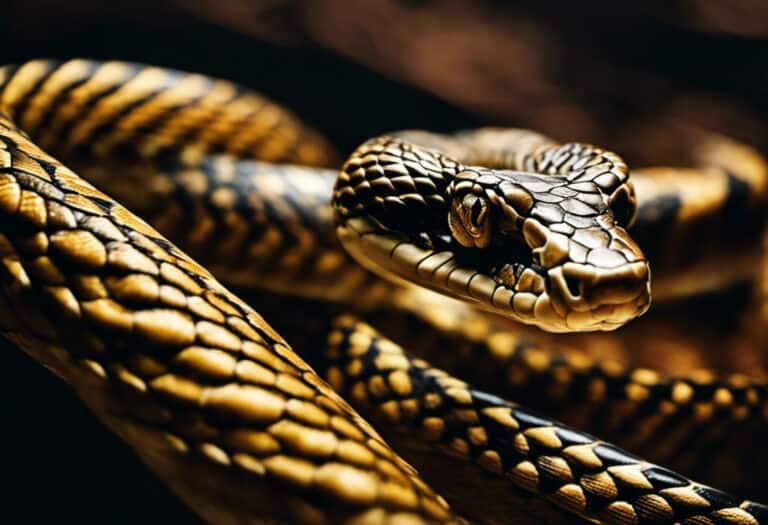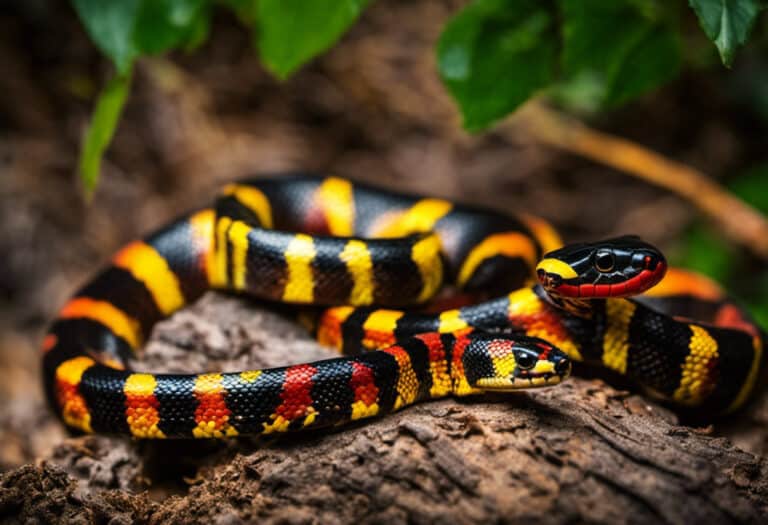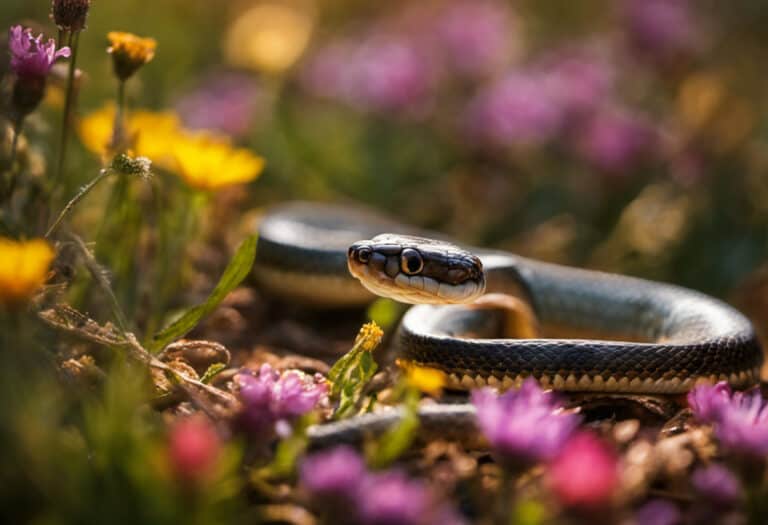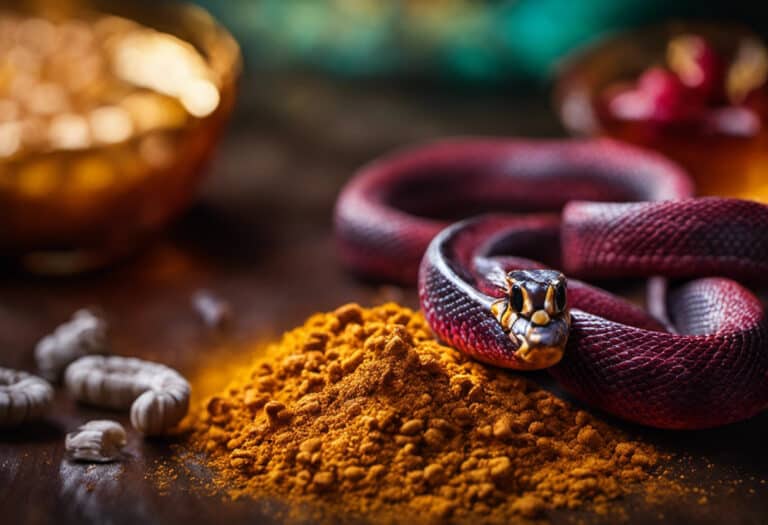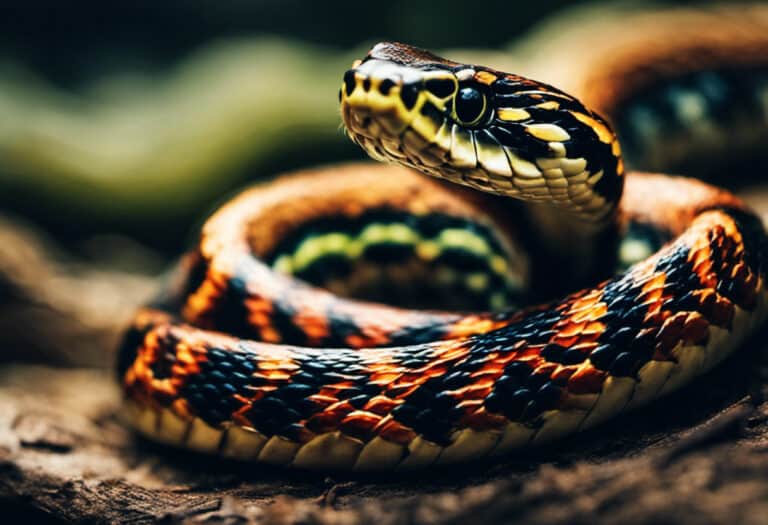Do Grass Snakes Eat Mice?
Curious about the diet of grass snakes? Ever wondered if these non-venomous reptiles actually consume mice?
In this article, we’ll explore their eating habits and answer the question: do they eat mice? Grass snakes, commonly found near water bodies, have a wide-ranging diet that varies throughout the year.
While they prefer fish in spring and hunt newts during summer, catching mice and voles is a rare occurrence for these fascinating creatures. Understanding their diet sheds light on their ecological role and impact on various species.
So, keep reading to learn more!
Key Takeaways
- Grass snakes primarily rely on amphibians for their diet, with frogs and toads being a staple food source throughout the year.
- Grass snakes rarely consume mice and voles, as they have a strong preference for fish in the spring and newts during the summer.
- The presence of mice can indirectly affect the grass snake’s diet, and a significant increase in the mouse population can disrupt the balance of the ecosystem.
- Factors such as the availability of alternative food sources, habitat conditions, and the population size and distribution of mice can influence grass snakes’ consumption of mice.
Grass Snake Diet: An Overview
Grass snakes, in general, prefer fish in the spring, hunt newts in the summer, and eat frogs and toads throughout the year. Their diet primarily consists of amphibians, making them important for controlling amphibian populations.
Grass snakes have a wide-ranging diet, but their preference for amphibians remains consistent.
They emerge from hibernation in March or April and engage in mating activities during April. Their hunting behavior is adapted to their amphibian diet, allowing them to catch fish in the spring when they’re most abundant, and hunt newts in the summer when they’re active.
Throughout the year, they feed on frogs and toads, contributing to the overall balance of ecosystems. Understanding their amphibian diet and hunting behavior is crucial for appreciating their role in nature and ensuring their conservation.
Preferred Prey of Grass Snakes
Grass snakes, in their natural habitat, exhibit a strong preference for amphibians as their primary source of food. They actively hunt for fish in the spring, newts in the summer, and consume frogs and toads throughout the year.
While they do occasionally catch mice and voles, this is a rare occurrence compared to their consistent reliance on amphibians.
Amphibians Vs. Rodents
Amphibians are the preferred food source for grass snakes, while they rarely catch mice and voles. Grass snakes have a diverse diet, but they show a clear preference for amphibians. Here is a comparison of their diet when it comes to amphibians versus rodents:
-
Amphibians: Grass snakes actively hunt and feed on various amphibians throughout the year. They consume frogs and toads as a staple food source. In the spring, they prefer fish, and during the summer, they hunt newts.
-
Rodents: While grass snakes have been known to occasionally catch mice and voles, this prey choice is uncommon for them. Grass snakes primarily rely on amphibians for their nutritional needs.
Grass snakes’ preference for amphibians highlights their role in controlling amphibian populations, making them important contributors to ecosystem balance. Their occasional predation on rodents may serve as an opportunistic food source rather than a significant part of their diet.
Dietary Preferences of Grass Snakes
When it comes to their diet, you’ll find that grass snakes have a clear preference for amphibians over rodents. While they may occasionally consume small mammals such as mice and voles, their primary food source consists of amphibians such as frogs, toads, newts, and fish.
This preference for amphibians is reflected in the grass snake’s dietary habits throughout the year. In spring, they prefer fish, while in summer, they actively hunt for newts. However, grass snakes consistently consume frogs and toads throughout the year.
This dietary preference isn’t surprising considering the grass snake’s habitat near water bodies where amphibians are abundant. Despite their ability to catch small mammals, grass snakes play a more significant role in controlling amphibian populations, making them valuable allies for gardeners in pest control.
The Role of Mice in the Grass Snake’s Diet
Mice are rarely caught by grass snakes, as they prefer a diet consisting of fish, newts, frogs, and toads throughout the year. However, it’s important to understand the role of mice in the grass snake’s diet and its implications for ecosystem balance.
-
Mice as competitors: While grass snakes don’t heavily rely on mice as a food source, the presence of mice in their environment can indirectly affect their diet. Mice compete with amphibians for resources, such as insects and vegetation, which are essential for the survival of grass snakes.
-
Grass snakes and ecosystem balance: Grass snakes play a crucial role in controlling amphibian populations, including newts, frogs, and toads. By preying on these species, grass snakes help maintain a balanced ecosystem. However, if the population of mice increases significantly, it can potentially disrupt this balance by outcompeting amphibians for resources.
-
Maintaining a diverse diet: While grass snakes primarily feed on fish, newts, frogs, and toads, having a diverse diet is beneficial for their overall health and well-being. While mice aren’t a significant part of their diet, they still contribute to maintaining the grass snake’s ecological niche and overall ecosystem balance.
Rare Occurrences: Grass Snakes and Mice
Rarely observed in the wild, grass snakes occasionally exhibit an intriguing dietary choice: mice. These instances, while infrequent, shed light on the adaptable nature of these non-venomous reptiles.
Although typically favoring amphibians as their primary food source, the occasional consumption of mice by grass snakes may have implications for rodent populations and warrants further study.
Uncommon Prey Choice
Grass snakes typically prefer amphibians as their main source of food, but they occasionally include mice and voles in their diet. This unusual prey choice is a result of the grass snake’s wide-ranging diet and opportunistic feeding habits.
While amphibians, such as frogs and toads, make up the majority of their diet throughout the year, grass snakes may turn to mice and voles when their preferred prey is scarce or unavailable. Although these small mammals aren’t their primary food source, grass snakes have been observed catching and consuming them on rare occasions.
This uncommon feeding behavior highlights the adaptability of the grass snake and its ability to exploit a variety of food sources when necessary.
Dietary Preferences of Snakes
If you encounter a grass snake, you may be surprised to learn that their diet consists mainly of amphibians such as frogs and toads. Grass snakes are opportunistic predators and their feeding behavior is influenced by the availability of prey. While they’re known to occasionally catch mice and voles, these rodents make up only a small portion of their diet.
This is because grass snakes primarily rely on amphibians for sustenance. They’ve specialized adaptations that allow them to efficiently hunt and consume these prey items, such as their ability to unhinge their jaws and swallow prey whole.
Impact on Rodent Populations
You may be interested to know that the grass snake’s diet consists mainly of amphibians, with rodents making up only a small portion of their food source. However, this doesn’t mean that grass snakes have no impact on rodent populations.
Here are three key points to consider regarding the impact of grass snakes on the ecosystem and predator-prey dynamics:
-
Regulation of amphibian populations: Grass snakes play a crucial role in controlling the population of amphibians, such as frogs and toads. By preying on these species, they help maintain a balance in their numbers, preventing overpopulation and its potential negative consequences.
-
Indirect impact on rodents: Although rodents aren’t a primary food source for grass snakes, their presence can indirectly affect rodent populations. By keeping amphibian populations in check, grass snakes indirectly influence the availability of resources for rodents, potentially impacting their population size.
-
Predator-prey dynamics: Grass snakes contribute to the intricate web of predator-prey relationships in the ecosystem. Their presence as predators influences the behavior and distribution of their prey species, which in turn can have cascading effects on other organisms within the ecosystem.
Understanding the impact of grass snakes on the ecosystem and predator-prey dynamics is essential for maintaining a healthy and balanced environment.
Factors Affecting Grass Snakes’ Consumption of Mice
Mice are rarely caught by grass snakes, as they prefer other prey such as fish, newts, frogs, and toads. Several factors influence the grass snakes’ consumption of mice, which in turn can impact rodent populations.
One significant factor is the availability of alternative food sources. Grass snakes have a wide-ranging diet and tend to prioritize amphibians over rodents.
Additionally, habitat conditions play an important role. Grass snakes are commonly found near water bodies, where they’ve better access to their preferred prey. If suitable habitats for amphibians are present, it’s likely that grass snakes will focus their feeding efforts on those species.
Finally, the population size of mice and their distribution in the snake’s habitat can also affect their consumption.
Overall, while grass snakes may occasionally prey on mice, their preference for other food sources limits their impact on rodent populations.
Grass Snakes and Their Varied Food Choices
Grass snakes have a wide-ranging diet, but their primary food source is amphibians. They employ various hunting techniques and strategies to capture their prey. Here are three key aspects of their food choices and hunting behavior:
-
Amphibians as primary food source: Grass snakes rely heavily on amphibians such as frogs, toads, and newts for their sustenance. These cold-blooded creatures provide the necessary nutrients and energy for the snake’s survival.
-
Hunting techniques: Grass snakes use a combination of stealth and patience to capture their prey. They often lie in wait near the water’s edge, blending in with the surrounding vegetation. When an opportunity arises, they strike with lightning speed, immobilizing their target with a quick bite.
-
Hunting strategies: Grass snakes adapt their hunting strategies depending on the availability of their preferred food. In the spring, they focus on hunting fish, while in the summer, they actively seek out newts. Throughout the year, they opportunistically catch frogs and toads. Mice and voles are rarely on their menu.
Understanding the varied food choices and hunting techniques of grass snakes is crucial for appreciating their role in maintaining the delicate balance of ecosystems.
The Importance of Understanding Grass Snakes’ Feeding Habits
Understanding the feeding habits of grass snakes is important for appreciating their role in maintaining ecosystem balance. Grass snakes are non-venomous and prefer to live near water, where they find their primary source of food: amphibians. However, their diet isn’t limited to just amphibians.
Grass snakes have a wide-ranging diet that includes fish in the spring, newts in the summer, and frogs and toads throughout the year. While they occasionally catch mice and voles, it isn’t a preferred food choice.
The ecological implications of grass snakes’ dietary preferences are significant. They play a crucial role in controlling amphibian populations, which in turn helps to maintain the balance of the ecosystem.
However, the impact of climate change on grass snake feeding habits is a concern. Changes in hibernation patterns due to climate change could disrupt their feeding schedules, leading to potential ecological imbalances.
Frequently Asked Questions
Are Mice a Common Part of the Grass Snake’s Diet?
Mice are not a common part of the grass snake’s diet. While this non-venomous snake has a wide-ranging diet, it prefers fish in spring and hunts amphibians like newts, frogs, and toads. The grass snake’s hunting techniques rarely involve catching mice.
Do Grass Snakes Eat Mice More Often Than Other Prey?
Grass snakes have diverse predatory preferences and prey availability. While they rarely catch mice, their diet primarily consists of amphibians, fish, frogs, and toads. Their eating habits are influenced by factors such as habitat and prey availability.
Can Grass Snakes Survive Without Consuming Mice?
Grass snakes can survive without consuming mice as they have a wide-ranging diet preference. However, mice play a minimal role in their diet. Their preference for amphibians has a greater impact on the ecosystem.
Are There Any Benefits to the Grass Snake When It Consumes Mice?
Eating mice may have potential impacts for grass snakes, as it diversifies their diet and contributes to ecological balance by helping control rodent populations. This balance is important for the overall health of ecosystems.
What Factors Influence the Grass Snake’s Decision to Consume Mice?
Factors influencing the grass snake’s decision to consume mice include prey availability, habitat conditions, and competition with other predators. Grass snakes generally prefer amphibians as food but may occasionally catch mice if other options are limited.
Conclusion
In conclusion, grass snakes have a diverse diet that primarily consists of fish, newts, frogs, and toads. While they occasionally consume mice and voles, it’s a rare occurrence.
Understanding the eating habits of grass snakes is important as it helps us appreciate their ecological role in controlling amphibian populations and acting as natural pest controllers in gardens.
These fascinating creatures play a vital role in maintaining the balance of various species in their habitats, making them an essential part of our ecosystem.
